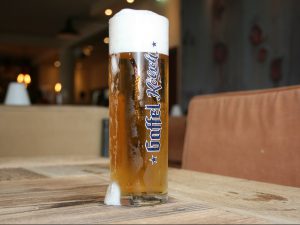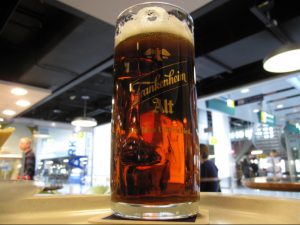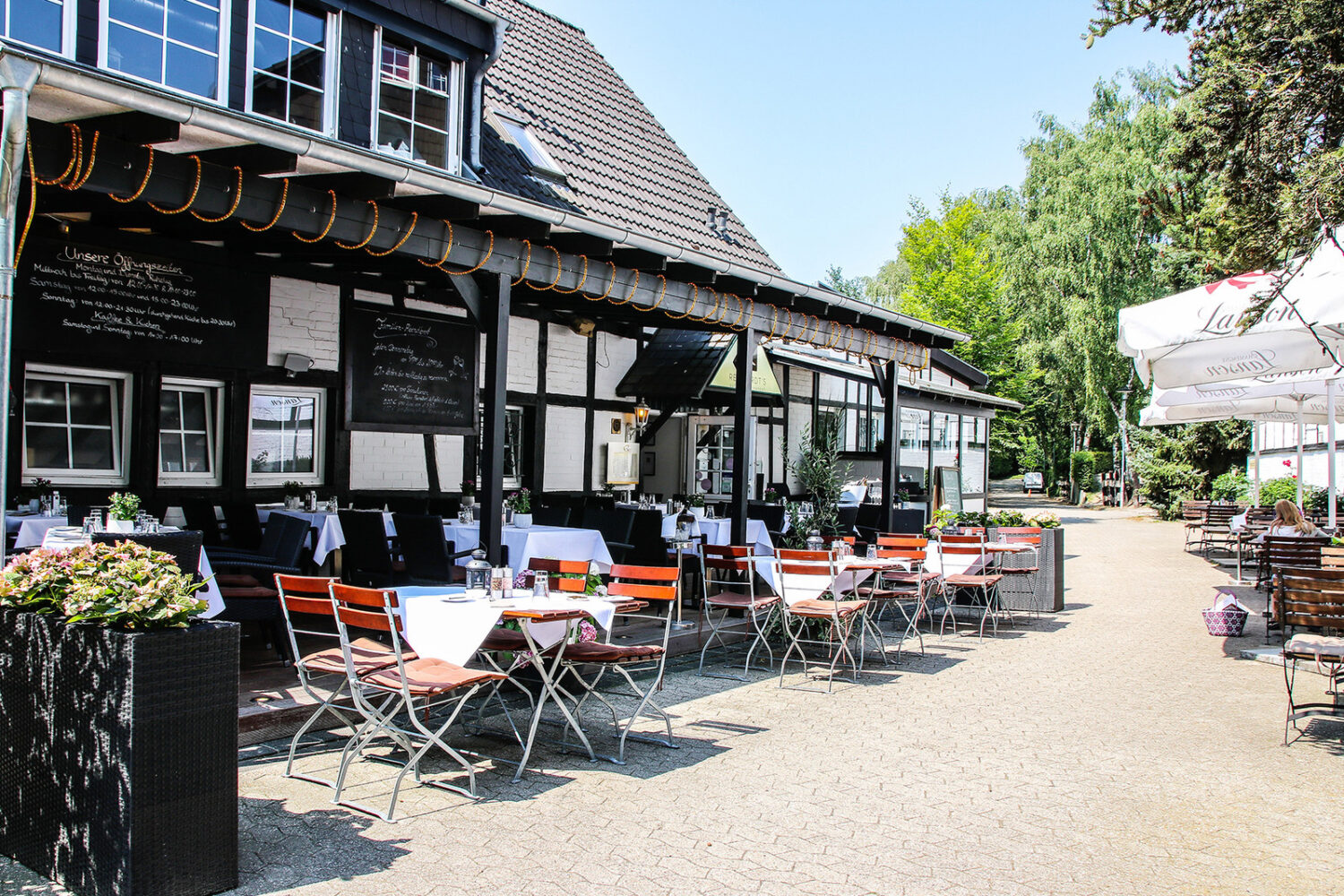Yesterday, I came back from a training week in Düsseldorf, Germany’s fashion capitol. I led two rounds of trainings at the picturesque horse farm Gut Moschenhof in Düsseldorf’s green surroundings. The venue: Reinhardt’s Restaurant, an oasis for gourmets. During one of four memorable lunch breaks we started to talk about blind tests and its irrational results.
Tom and Jerry, Hillary and Donald, Düsseldorf and Cologne, … Yep, those two cities will never be friends. Separated by 30 miles only, Düsseldorf and Cologne are competitors in many aspects of life, especially in football, carnival, and beer.
I was just enjoying my second course – poulard breast stuffed with spinach on top of wild mushroom risotto – when our table talk switched to blind tests, blind tests with beer. Apparently, in blind tests, people cannot really distinguish between blond KÖLSCH from Cologne and dark ALT from Düsseldorf. Representatives of both cities would prefer to die before accepting those obviously “fake news”.


But – are they fake?
In 2006, the University of Applied Sciences of Düsseldorf carried out a study on this subject. In the abstract we can learn that,
In consumer psychological experiments with 50 men of Cologne and 50 men of Dusseldorf between the age of 35 and 65, we examined whether there are recognizable differences between the two beers, KÖLSCH and ALT. Firstly, the taste of KÖLSCH and ALT was judged in a blind test. The results of the evaluation of KÖLSCH and ALT regarding the characteristics “tastes good”, “tastes fresh”, “tastes mild” and “tastes aromatic” were nearly equal. A further blind test examined whether the test subjects could actually recognize KÖLSCH and ALT at all. Again there was no significant difference – only 55 % of the beer was identified correctly which is on a random level. Later, the taste of KÖLSCH and ALT was tested again, but in an open test. This time the men of Cologne clearly prefer the taste of KÖLSCH. The men of Dusseldorf, however, find the taste of the ALT significantly better than the taste of KÖLSCH. A study of the preferences supports these findings: Whereas the preferences in the blind test, were nearly 50:50, the preferences in the separate open test changed to 78:22 in favour of the home beer. These results are quite amazing, because it is unbelievable that men cannot differentiate objectively between KÖLSCH and ALT.
These results made me reflect on public speaking. Don’t we face something similar on stage? What if there were a blind test for speech content?
If the audience were only allowed to read the scripts and review the slides of the speakers, how would their preferences differ from their ranking after having experienced the speakers live on stage? Would it be the same?
It wouldn’t be the same ranking. Whether it is a glass of beer or a speech – the packaging is far too important to be ignored. And in public speaking your packaging is your delivery. Your content may be the best content in the world – it is your delivery that makes all the difference.
When you prepare for your next important presentation, pay much more attention to aspects like
- vocal variety (pace, pitch, pause, volume)
- dramatic pauses
- dialog
- use of stage
- movement on stage
- holograms
- open body language
- purposeful gestures
- eye contact
- targeted eye contact
- props
To date, I have experienced and evaluated more than 9,000 speeches in my trainings. Take my word: Once you marry great content with great delivery, you will be a great success on any stage, whether it is in Düsseldorf or Cologne.

